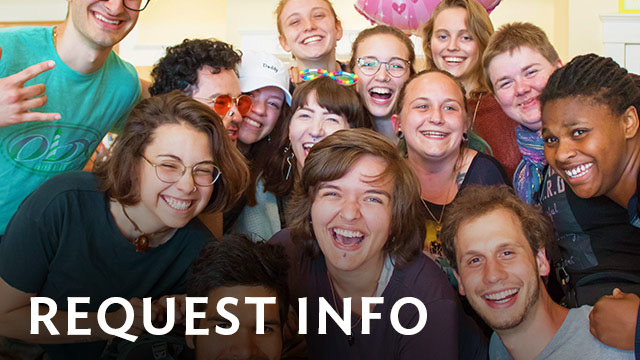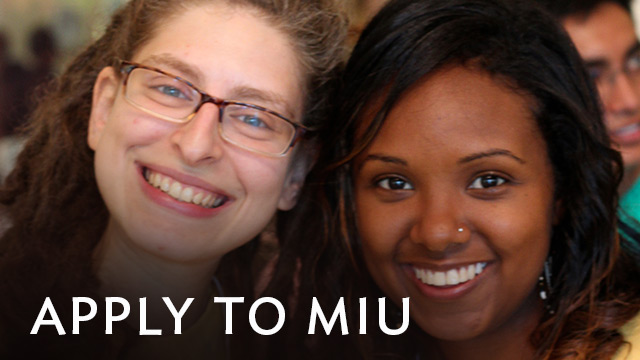MATH 281 Calculus 1
Calculus, one of the most useful areas of mathematics, is the study of continuous change. It provides the language and concepts used by modern science to quantify the laws of nature and the numerical techniques through which this knowledge is applied to enrich daily life. Students gain a clear understanding of the fundamental principles of calculus and how they are applied in real-world situations. Topics include: techniques of integration, further applications of derivatives, and applications of integration.
MATH 282 Calculus 2
Calculus, one of the most useful areas of mathematics, is the study of continuous change. It provides the language and concepts used by modern science to quantify the laws of nature and the numerical techniques through which this knowledge is applied to enrich daily life. Students gain a clear understanding of the fundamental principles of calculus and how they are applied in real-world situations. Topics include: techniques of integration, further applications of derivatives, and applications of integration.
MATH 283 Calculus 3
Calculus, one of the most useful areas of mathematics, is the study of continuous change. It provides the language and concepts used by modern science to quantify the laws of nature and the numerical techniques through which this knowledge is applied to enrich daily life. Using computers for visualization, students gain a clear understanding of the fundamental principles of calculus and how they are applied in real-world situations. Topics include infinite series, functions of several variables, partial derivatives, the chain rule, multiple integrals, change of variables.
MATH 286 Linear Algebra 1
Linear algebra is the study of linearity, the simplest form of quantitative relationship, and provides a basis for the study of many areas of pure and applied mathematics, as well as key applications in the physical, biological, and social sciences. Topics include systems of linear equations, vector equations, matrices, the vector space Rn together with its bases, linear transformations, and eigenvectors and eigenvalues.
MATH 272 Discrete Mathematics
Discrete mathematics, the mathematical study of finite processes and discrete phenomena, is essential for computer science. Topics include: logic and sets, relations and functions, vertex-edge graphs, recursion, and combinatorics. (Same as CS 272)
MATH 351 Probability
Probability provides precise descriptions of the laws underlying random events, with applications in quantum physics, statistics, computer science, and control theory. Topics include: permutations and combinations, axiomatic definition of probability, conditional probability, random variables, discrete and continuous distributions, expectation and variance, and the central limit theorem.
CS 201 Procedural Programming
This course introduces the fundamental concepts related to computer programming, preparing students with the skills to write basic computer programs, and the knowledge to understand basic programs written by others. Topics include built-in data types, flow control using conditionals and loops, arrays, console I/O, recursion, using libraries, and using classes to create their own data types.
CS 203 Object-Oriented Programming
This course covers programming in Java, specifically focusing on object-oriented concepts and creating GUI applications. Topics include: classes and objects, primitives and references, inheritance and polymorphism, interfaces and abstract classes, exception handling, GUI programming in Swing, and serialization and file I/O.
CS 221 Data Structures
Students use computer programming laboratory problems to apply the principles of data structure organization in a practical environment and develop advanced programming skills. The organizing power of knowledge is found to be the source of order in computer data structures. Topics include: abstract data types, internal representation of data, stacks, queues, linked lists, hash maps, binary trees, heaps, red-black trees, 3-4 trees and B trees. (4 credits)
CS 321 Introduction to Algorithms
Students are introduced to the study algorithms. Topics include: searching and sorting algorithms, computing time of programs and representations and algorithms for graphs. This course also includes a significant research paper around the efficiencies and running times of different algorithms (4 credits)
CS 363 Computer Organization and Architecture
This course presents the internal structure of a computer, an introduction to assembly language, and the design of digital logic circuits and their use in structuring the various functional components of a computer, such as the memory and central processing unit. Topics include: machine organization, logic gates, circuits, machine language, assembly language, memory, I/O systems, and how these all combine to create typical and atypical architectures. (4 credits)
CS 472 Web Application Programming
This course covers languages, tools, and technologies for developing interactive and dynamic web sites. Topics and technologies include HTTP, HTML, CSS, client and server-side programming, database interactions, web security, and Ajax technologies. (4 credits)
 Today’s society is increasingly information-based. Fundamental knowledge of how computers and computing systems work is a vital part of modern life and a universal skill that can be applied to a variety of careers and fields.
Today’s society is increasingly information-based. Fundamental knowledge of how computers and computing systems work is a vital part of modern life and a universal skill that can be applied to a variety of careers and fields. Pedro Ugalde is this program’s admissions counselor for US students. Pedro will provide you with all the details of becoming a student, including connecting you with the program director or faculty.
Pedro Ugalde is this program’s admissions counselor for US students. Pedro will provide you with all the details of becoming a student, including connecting you with the program director or faculty. This course is your entryway into MIU and Consciousness-Based Education. We dive into an ancient yet radically new framework for understanding the universe and our place in it. This model holds that consciousness, not matter, is fundamental. With this in mind, we look at some of life’s big questions: How can we develop our fullest potential as human beings? How do art and stories help us understand that potential? How can our own growth help create a more just and peaceful society? What do the world’s great wisdom traditions have in common? How can we improve education and healthcare? The new paradigm we explore in this course infuses all your classes at MIU. In this course, you'll learn the Transcendental Meditation® technique to awaken the full potential of consciousness in your life.
Comments from students
This course is your entryway into MIU and Consciousness-Based Education. We dive into an ancient yet radically new framework for understanding the universe and our place in it. This model holds that consciousness, not matter, is fundamental. With this in mind, we look at some of life’s big questions: How can we develop our fullest potential as human beings? How do art and stories help us understand that potential? How can our own growth help create a more just and peaceful society? What do the world’s great wisdom traditions have in common? How can we improve education and healthcare? The new paradigm we explore in this course infuses all your classes at MIU. In this course, you'll learn the Transcendental Meditation® technique to awaken the full potential of consciousness in your life.
Comments from students
 Vikas Narula, a graduate of our BS in Computer Science, is the owner and founder of Keyhubs, a Minneapolis-based management software and consulting firm that uncovers a company’s “hidden organization” — the informal network of relationships between workers that shows how work actually gets done.
Vikas Narula, a graduate of our BS in Computer Science, is the owner and founder of Keyhubs, a Minneapolis-based management software and consulting firm that uncovers a company’s “hidden organization” — the informal network of relationships between workers that shows how work actually gets done.


